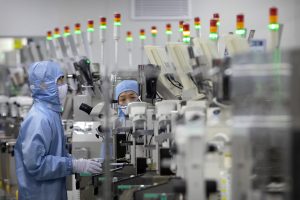A shift is occurring in U.S. policy on export controls, away from its “tall fence around a small yard” approach. The new strategy seeks a more expansive application of export controls more directly aimed at bringing about geopolitical objectives.
On October 7, 2022, the Bureau of Industry and Security (BIS) at the U.S. Department of Commerce unveiled two new export control rules aimed at degrading Chinese AI capabilities. Typically, such announcements would have garnered enthusiasm mostly among a small community of export control experts, but these controls have frustrated U.S. allies and sent shockwaves throughout the global high-tech economy. These controls, if maintained, enforced, and ultimately supported by allies, have the potential to reshape the world’s most consequential economic relationships, shuffle supply chains, and realign geoeconomic blocs.
The new restrictions on exports of advanced semiconductors to China are particularly unique because they represent a return to a broad-based designation of export controls. This reflects the U.S. assumption that it is no longer possible to distinguish between military and non-military end-users in China, a consequence of Beijing’s civil-military fusion doctrine.
The controls also invoke Foreign Direct Product (FDP) rules, which extraterritorially apply U.S. export controls to items that contain U.S. tools, inputs, or software. This means, for example, that Dutch enhanced ultraviolet (EUV) lithography equipment made with U.S. inputs is prohibited from being sold to China without a U.S. license – and the BIS has instituted a “presumption of denial” policy, effectively disallowing these sales.
Another feature of the controls is that they establish threshold limits, meaning that as technology advances and older technology becomes more generic, the scope of covered goods will necessarily increase.
Another conspicuous feature of the controls is that, unlike the substantial controls levied on Russia in recent years, which expanded after Russia invaded Ukraine, the United States failed to achieve allied buy-in to the rules prior to their release, even after extensively courting allies for months ahead of the announcement. Without the participation of other high-tech producing economies, such as the Netherlands and Japan, the controls are unlikely to succeed in the long run.

































